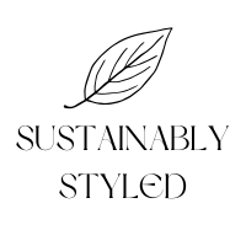Happy New Year! Start off the year with a bang by saving 25% on all products! Use code NewYearNewSpace
The Dirty Secrets Hiding in Your Bedding!” 😴🛏️
We spend nearly a third of our lives in bed—so the materials we surround ourselves with matter! While conventional bedding may contain hidden chemicals that can impact our health, there are plenty of non-toxic, sustainable alternatives that allow you to sleep soundly, knowing your space is free of harmful toxins
Kelly
2/1/20253 min read


What’s Lurking in Your Bedding? The Hidden Chemicals You Need to Know About
Your bed should be a place of rest, comfort, and relaxation. But what if the very sheets, pillows, and mattresses you sleep on every night are filled with hidden chemicals that could be affecting your health? Many conventional bedding products contain toxins from manufacturing processes, fabric treatments, and synthetic materials—things we rarely think about but are in close contact with for hours every night.
If you’re striving for a healthier, more eco-friendly home, understanding what’s in your bedding is a great place to start. Let’s break down the most common chemicals found in bedding, their potential effects, and how to choose safer, non-toxic alternatives.
Common Chemicals Found in Bedding
1. Formaldehyde
• Where It’s Found: Wrinkle-resistant or “permanent press” sheets, pillowcases, and mattress covers
• Why It’s Used: Prevents fabrics from wrinkling and shrinking.
• Health Concerns: Formaldehyde is a known carcinogen that can cause skin irritation, respiratory issues, and allergic reactions.
2. Flame Retardants
• Where It’s Found: Mattresses, mattress toppers, and some bedding labeled as “flame-resistant.”
• Why It’s Used: To meet flammability standards, particularly for mattresses.
• Health Concerns: Many flame retardants contain PBDEs (polybrominated diphenyl ethers), which have been linked to hormone disruption, developmental issues, and neurological effects.
3. Pesticides & Herbicides
• Where It’s Found: Conventional cotton bedding.
• Why It’s Used: Cotton is one of the most pesticide-intensive crops in the world.
• Health Concerns: Residual pesticides can cause skin irritation and have been linked to endocrine disruption and long-term health risks.
4. VOCs (Volatile Organic Compounds)
• Where It’s Found: Memory foam mattresses, synthetic pillows, and bedding treated with chemical finishes.
• Why It’s Used: VOCs are released from adhesives, synthetic foams, and fabric treatments.
• Health Concerns: Can cause headaches, dizziness, respiratory problems, and long-term exposure may contribute to more serious health issues.
5. Azo Dyes & Synthetic Dyes
• Where It’s Found: Brightly colored or deeply dyed sheets, blankets, and pillowcases.
• Why It’s Used: To create vibrant, long-lasting colors.
• Health Concerns: Some synthetic dyes contain heavy metals and toxins that can cause skin irritation and allergic reactions.
6. PFAS (Per- and Polyfluoroalkyl Substances)
• Where It’s Found: Waterproof mattress protectors and stain-resistant bedding.
• Why It’s Used: To make fabrics resistant to water, stains, and oils.
• Health Concerns: PFAS, also called “forever chemicals,” have been linked to hormone disruption, immune system issues, and even certain cancers.
How to Choose Safer, Non-Toxic Bedding
If you’re looking to reduce your exposure to these hidden toxins, here are some tips for choosing safer bedding:
1. Opt for Organic & Natural Fibers
Look for bedding made from certified organic cotton, linen, hemp, or bamboo that hasn’t been treated with pesticides or harmful chemicals. Organic materials are not only safer for your health but also more sustainable for the environment.
2. Check for Certifications
When shopping for non-toxic bedding, look for trusted certifications like:
• GOTS (Global Organic Textile Standard) – Ensures organic fiber content and prohibits harmful chemicals.
• OEKO-TEX® Standard 100 – Tests for harmful substances in textiles.
• GREENGUARD Gold – Ensures low VOC emissions in mattresses and bedding.
3. Avoid “Wrinkle-Free” and “Stain-Resistant” Labels
These often indicate chemical treatments with formaldehyde or PFAS. Instead, go for untreated, natural fabrics and embrace the beauty of organic texture!
4. Choose Natural or Plant-Based Dyes
Instead of synthetic dyes, opt for bedding made with plant-based or non-toxic dyes to avoid exposure to heavy metals and azo compounds.
5. Be Mindful of Memory Foam & Synthetic Fillers
If you’re looking for a non-toxic mattress or pillow, choose ones made from natural latex, organic wool, or organic cotton instead of memory foam, which often contains VOCs.
6. Wash New Bedding Before Use
Even natural fabrics may have residual chemicals from production. Washing your bedding before use with a gentle, non-toxic detergent can help remove some of these residues.
Final Thoughts
We spend nearly a third of our lives in bed—so the materials we surround ourselves with matter! While conventional bedding may contain hidden chemicals that can impact our health, there are plenty of non-toxic, sustainable alternatives that allow you to sleep soundly, knowing your space is free of harmful toxins.
Have you switched to organic or non-toxic bedding? I’d love to hear about your experience in the comments! 💚😴
Disclaimer: Some of the links in this post may be affiliate links, which means I may earn a small commission if you make a purchase through them—at no extra cost to you. I only recommend products and brands that align with my values and that I genuinely love. Your support helps me continue creating content to inspire beautiful, sustainable spaces. Thank you! 💛
Sustainably Styled
Transform your space with eco-friendly design options.
Contact
info@sustainablystyled.org
© 2024. All rights reserved.
